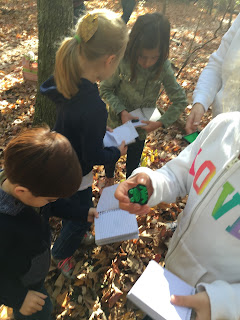Eco-Friendly Santa
 Christmas is quickly approaching and gift shopping is in
full swing. While we spend our dollars on manufactured store bought gifts we
should keep our eyes open for environmentally friendly options. Things we buy
have a bigger impact on our environment than we may have previously been aware
of. We need to be consciences about what materials are used to make our gifts.
Plastic stays in our environment forever and never breaks down, that is why
recycling plastic is very important. I could go on about how we are
contributing to environmental problems, but the more important step is actually
taking action on the knowledge we have. Making responsible choices this
Christmas season not only makes a difference to our environment but also impacts
the lives of our children. Keeping the health of the environment as our top
priority this season can make a difference in our children’s lives as they
watch and follow what we do. Connecting our green choices to the theories of
nature play is just as important as playing in nature. Making it a great way to
ease your kids into the topics of why eco-friendly toys are different and
special.
Christmas is quickly approaching and gift shopping is in
full swing. While we spend our dollars on manufactured store bought gifts we
should keep our eyes open for environmentally friendly options. Things we buy
have a bigger impact on our environment than we may have previously been aware
of. We need to be consciences about what materials are used to make our gifts.
Plastic stays in our environment forever and never breaks down, that is why
recycling plastic is very important. I could go on about how we are
contributing to environmental problems, but the more important step is actually
taking action on the knowledge we have. Making responsible choices this
Christmas season not only makes a difference to our environment but also impacts
the lives of our children. Keeping the health of the environment as our top
priority this season can make a difference in our children’s lives as they
watch and follow what we do. Connecting our green choices to the theories of
nature play is just as important as playing in nature. Making it a great way to
ease your kids into the topics of why eco-friendly toys are different and
special.
Now the steps for taking action can include finding
alternative gifts, making your own gifts or giving the gift of an experience.
These choices are easy, simple and they have the potential to be more personal
as well.
Toys:
Like I mentioned before the biggest problem with common kid
toys is the plastic used to make them. So finding toys that are recyclable or
made of recycled materials is the main goal. I have already done some research
and have come across some pretty cool alternatives that I think would made a great
hit this Christmas.
- § HULKI play houses are super cool animal shaped play houses that are completely recyclable. Kid’s toys only last so long because they are continuously growing and their interests grow along with them. So this is a great options that is completely recyclable when they move on to the next toy.
- § The Green Life offers a large variety of toys for babies and young children that are made with eco-friendly materials. They are cruelty-free, BPA free, non-toxic and recyclable.
Nature play toys encourages creative imaginative play with
natural materials. Check out these ideas for bringing nature into your home.
- § Mud Kitchens are a great way to get your kids outside, they can be purchased or a great DIY project.
- § Natural building blocks are a great way to introduce nature play. The blocks could be used for building or even mixed with other loose parts to entertain creativity.
The Gift of An Experience:
While gift giving is a wonderful thing to part take in, all
the Christmas parties and family get-togethers have us spending money on
physical objects that in a year or so will be out dated, or no longer useful. Another
“gift” giving idea that will be remembered for years to come and add to the
enrichment of our family’s memories is the gift of an experience. For many
years my parents took my younger sister and I on vacation every year to the
same location and resort. I also personally know families that pick a different
event to attend or vacation spot to visit to celebrate Christmas. The
experience and memories you create will last a lot longer than any physical
toy. The memories I have of family time together and meeting new friends are
honestly some of my most treasured childhood memories.
Whether you are looking for an alternative for common toys,
trying out new nature play toys or wanting to give memories as a present this
year, there are many more options than what I mentioned in this blog. So do your
research and make responsible purchases to make Christmas a little greener this
year.
Merry Christmas and a Happy New Year!

















